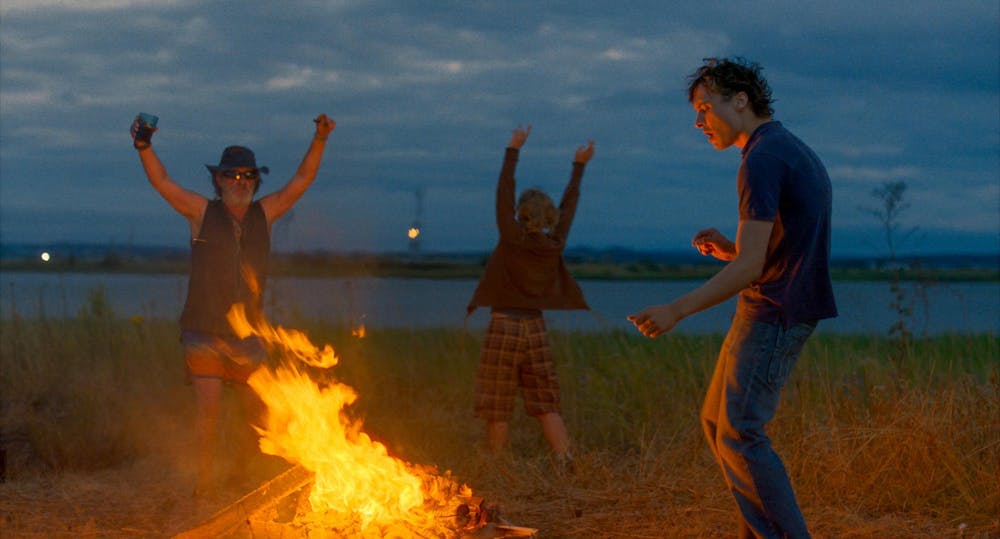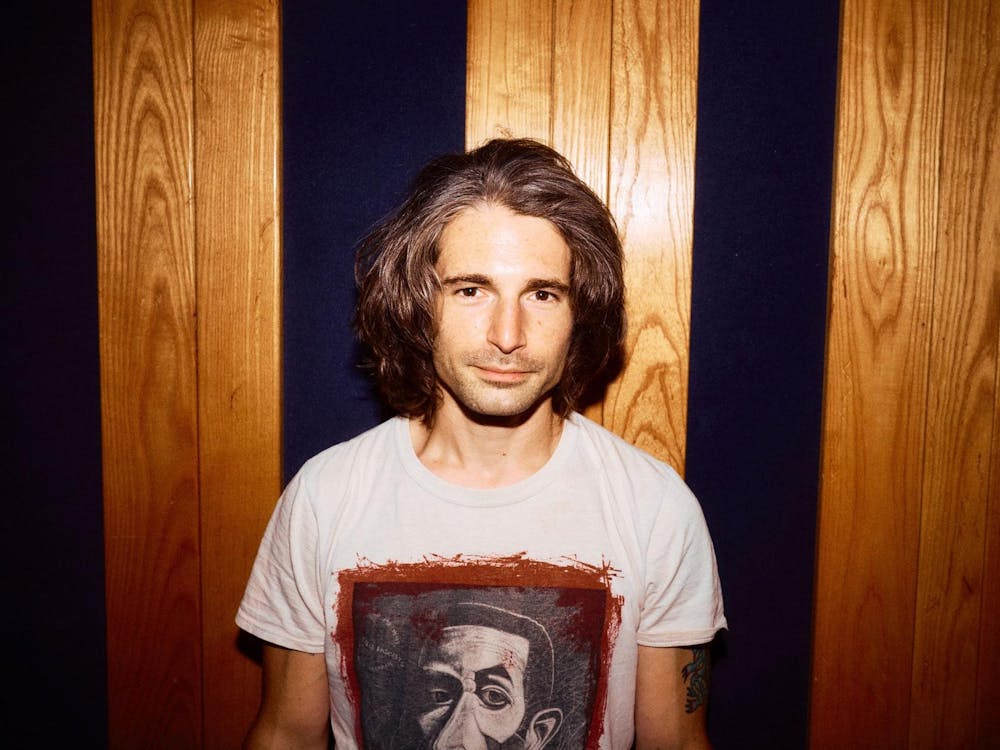As the opening credits roll on “Urchin,” a woman’s voice rises over the sound of a bustling London street. She is holding up a Bible, preaching about salvation and the path to it — a path that will ultimately be traversed by the man who wakes up just a few feet from her, curled up on the side of the road.
“Urchin” follows Mike, played by Frank Dillane, a young homeless man in the throes of addiction who is given a chance at recovery. Shown Thursday night at the Violet Crown Theater on the second day of the Virginia Film Festival, “Urchin” was the highly anticipated directorial debut from actor Harris Dickinson, known most recently for leading roles in “Triangle of Sadness” and “Babygirl.”
The film was presented in the Un Certain Regard category at Cannes Film Festival earlier this year, a section created to recognize films that show significant artistic achievement which may be indicative of a greater trend in cinema. Dillane won Best Actor in that Un Certain Regard category, an acknowledgement of his stellar performance as Mike.
“Urchin” portrays Mike with incredible nuance, balancing his rocky introduction as a temperamental addict against the sobriety he is forced to find after a stint in prison. Mike is catapulted through a series of odd jobs, tender friendships and bizarre interactions that challenge this newfound sobriety, allowing the audience to see him as equally sympathetic and deranged. He desperately wants to get better, but cannot find a sustainable way to do so.
Fourth-year College student Kenneth Nguyen was in the audience and commented on how Dillane’s impressive performance brought complexity to Mike’s character.
“I really liked the main character. I think his performance really took over the film,” Nguyen said. “He’s a very charismatic, very likeable guy, we wanted to root for him.”
However, “Urchin” knows that recovery is not a straight line, which is why Dickinson does not choose a simple representation of Mike’s struggle with addiction. Mike’s mental battle is instead shown through surprising moments of experimental filmmaking, breaking from the film’s established realism. The audience first witnesses this style in a scene that follows water washing down a prison drain to become a spacious forest cave — a cave which becomes an important motif in the film, appearing at times of transition or deliberation.
Warping visuals and microscopic renderings of atoms evoke the psychedelic experience of Mike’s drug-induced highs, immersing the audience in what he is actually feeling during these moments. More grounded images like a white church and religious icons are also used to capture Mike’s inner emotions, as they harken back to the film’s larger themes of salvation and recovery.
Fourth-year Engineering and College student Ansh Pathapadu noted how Dickinson’s unorthodox approach shed new light on the topic of addiction.
“There’s been many movies about addiction,” Pathapadu said. “[Dickinson] does kind of follow the same structure of giving us a little hope and then ripping it away from us. But I think what he does really well is his use of experimental filmmaking to show these things that are going on inside [Mike’s] mind.”
Dickinson’s commitment to showing the complexities of Mike’s experience is supported by a strong script that blends realistic dialogue with deliberate societal commentary. There is also a perfect mix of humor and sincerity in Dickinson’s writing, which was evident in the audience reactions. Natural laughs were given to intended lines, while serious moments earned deep breaths and muttered words. In addition, beautiful cinematography from Josée Deshaies and an eclectic score from Alan Myson work perfectly to both stabilize and emphasize the tumultuous plot.
The overall pace is the only aspect of the film that could be improved upon, as the first act takes up more narrative space than the second. The time spent setting up Mike’s character allows for the later effects of his relapse to get lost in the general chaos of the second act. However, the film’s ambiguous ending does speak to the reality of addiction and recovery, as the cycle is never truly finished, and the audience is left to wonder what will happen to Mike.
Ultimately, Harris Dickinson’s directorial debut is strong, featuring experimental filmmaking that comes as a bold, but welcomed surprise. His character of Mike is impressively relatable, regardless of how unique his situation may seem. Dickinson has confidently stepped into the directing sphere with a film that tells a beautifully human story, while still preserving elements of artistry that make the film an exciting, impactful watch.







